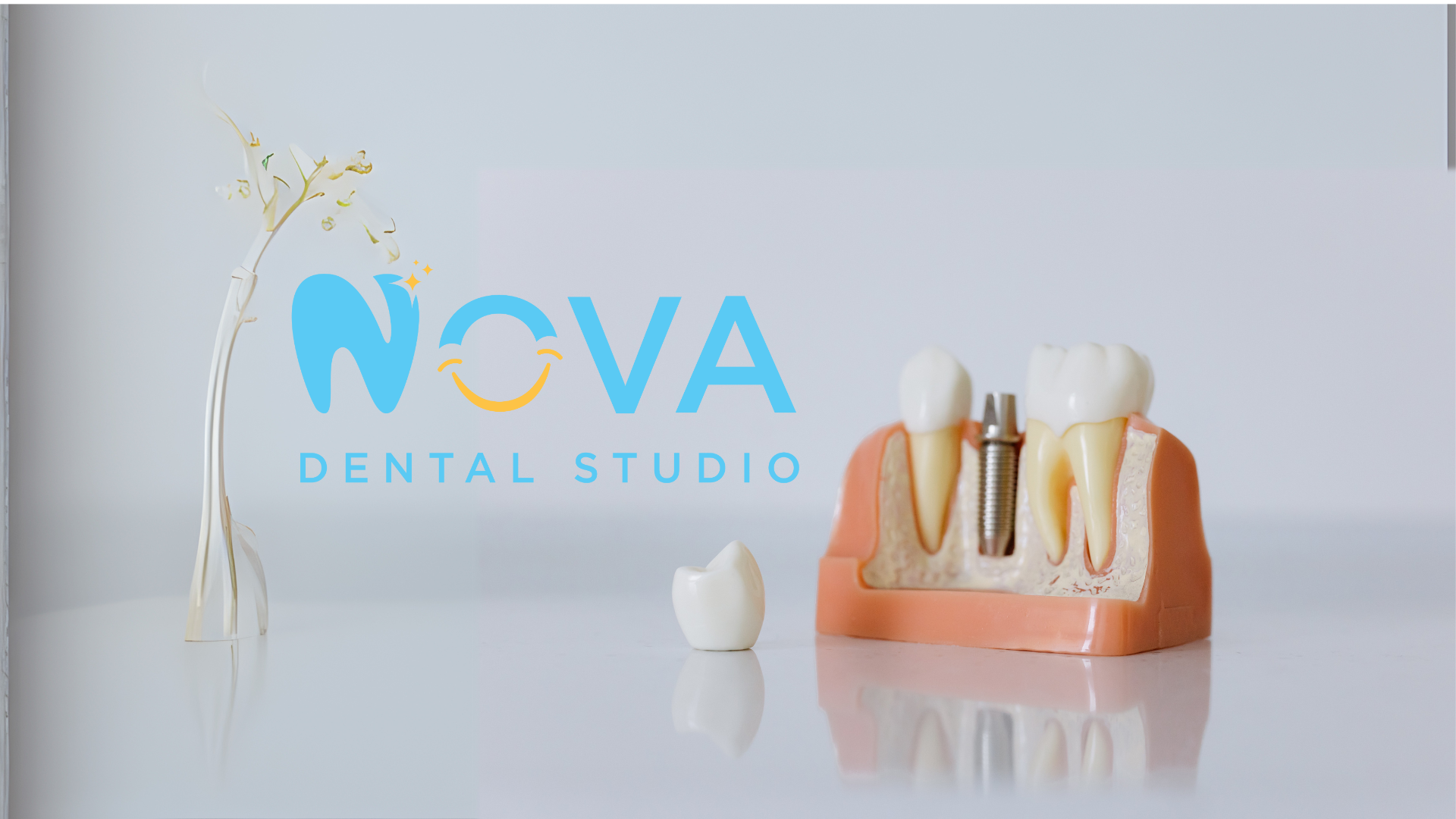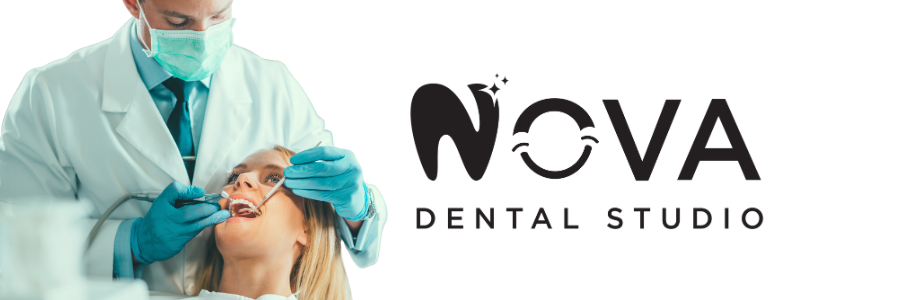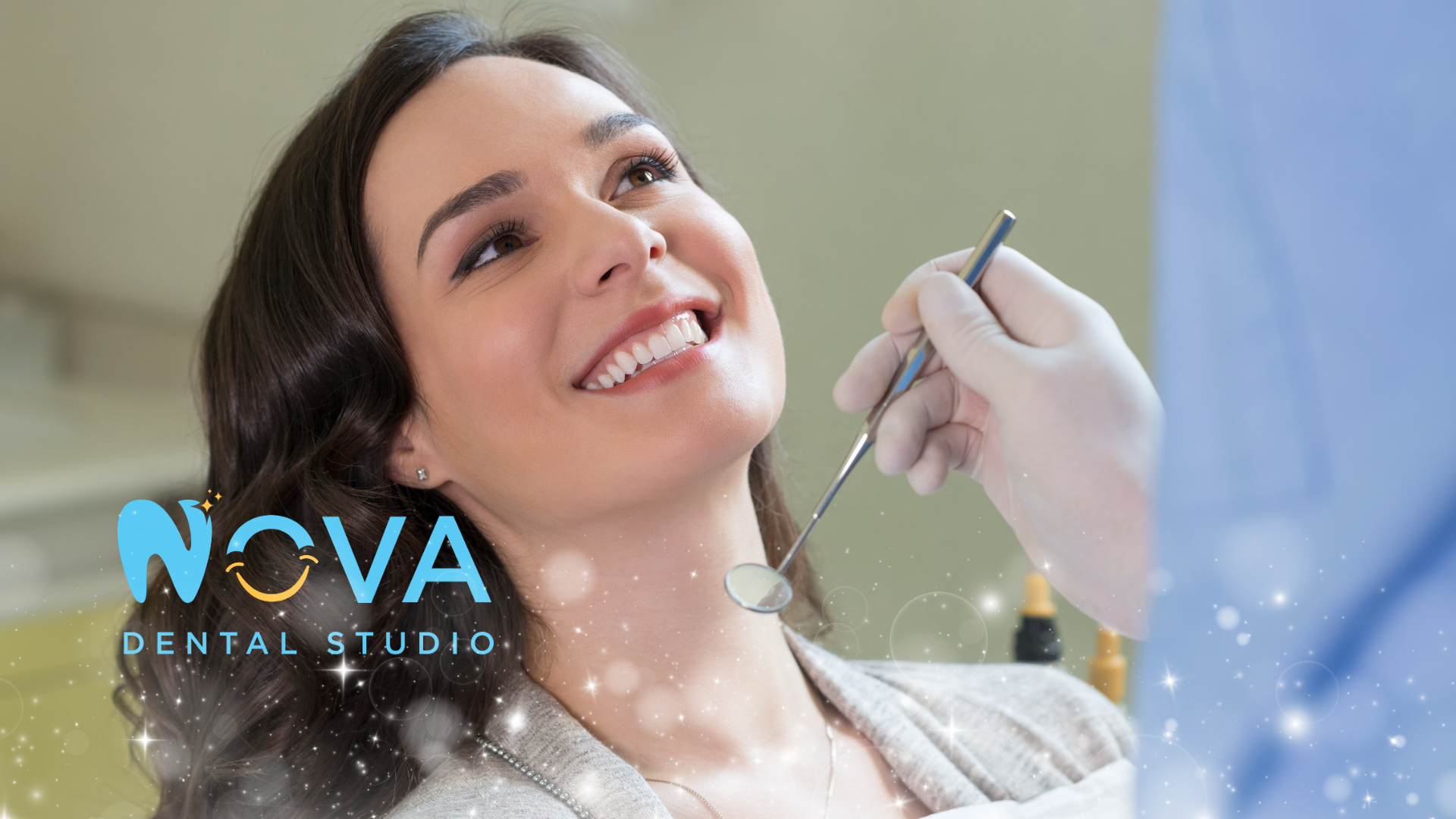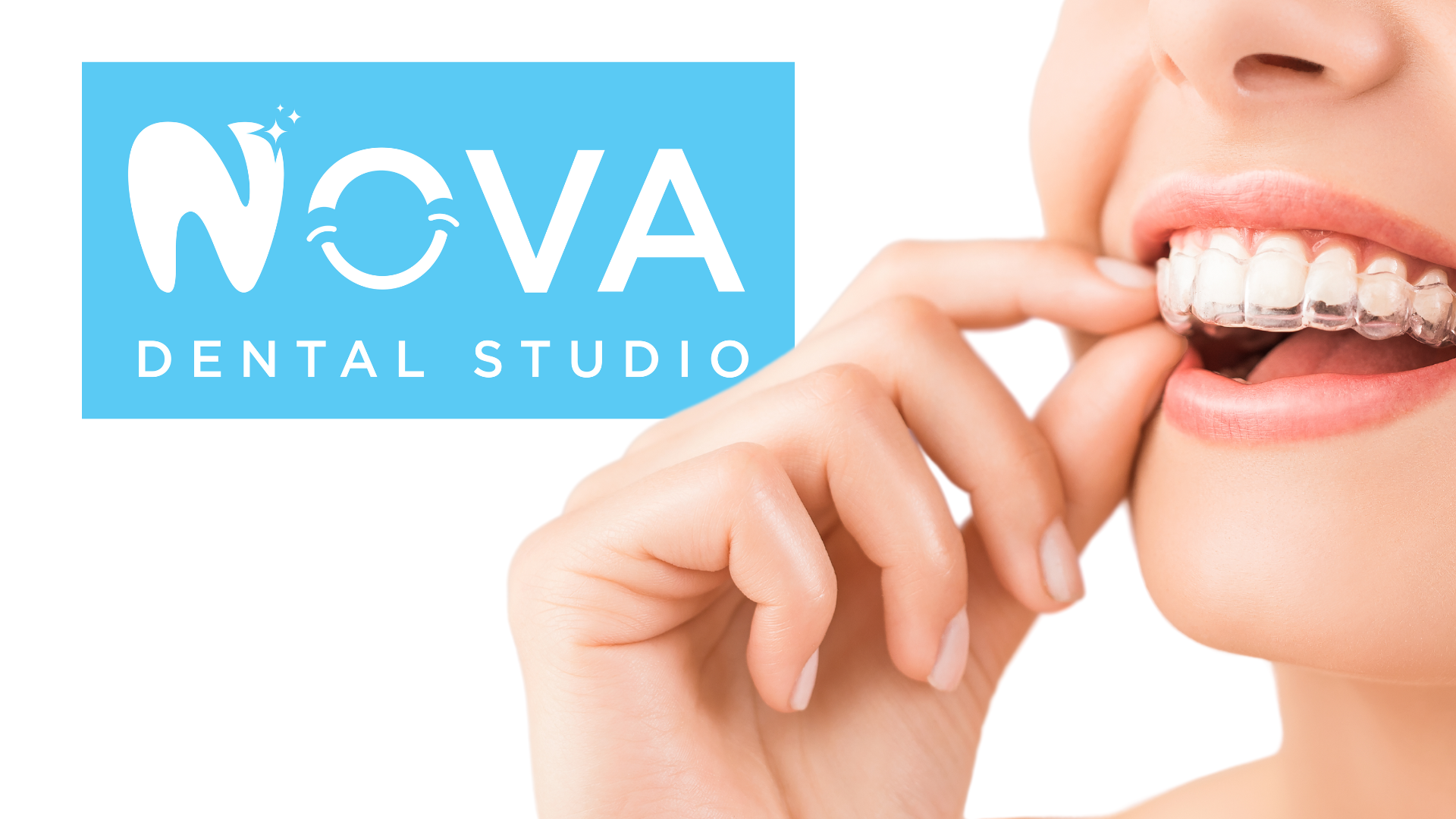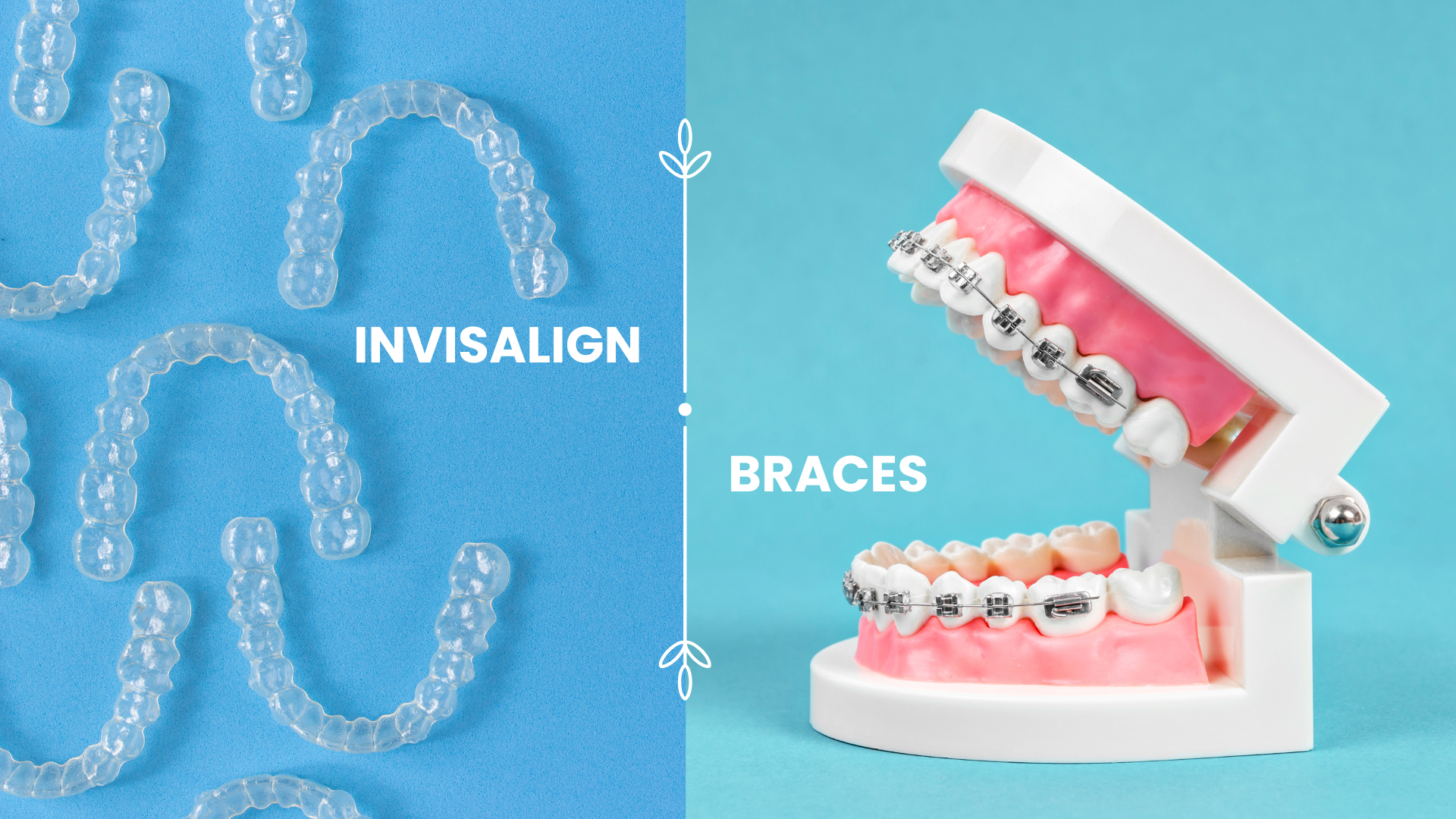Best Practices for Eating When You Have Invisalign Aligners
Understanding the Importance of Aligner Removal Before Meals
It's super important to take your Invisalign aligners out before you eat. It can be a pain, especially when you're out and about, but trust me, it makes a big difference in the long run. At Nova Dental Studio, we always stress this to our patients because it affects how well your treatment goes and how healthy your teeth stay.
Preventing Damage to Your Aligners
Think of your aligners as delicate tools. They're made to shift your teeth gradually, but they're not designed to withstand the force of chewing. Eating with them can lead to cracks, breaks, or warping. And damaged aligners? They won't fit right, so your treatment gets thrown off course. Plus, you might end up needing replacements, which nobody wants.
- Avoid hard or sticky foods that can easily damage the aligners.
- Always store your aligners in their case when you remove them to prevent accidental damage.
- Inspect your aligners regularly for any signs of wear and tear.
Maintaining Optimal Oral Hygiene
Food particles love to hide. And when you eat with your aligners in, those particles get trapped between the aligners and your teeth. This creates a breeding ground for bacteria, which can lead to:
- Cavities
- Gum disease
- Bad breath
Removing your aligners lets you brush and floss properly after eating, keeping your mouth clean and healthy. It's a simple step that makes a huge difference.
Keeping your aligners clean is just as important as keeping your teeth clean. Make sure to rinse your aligners every time you take them out to remove any lingering food particles. A clean aligner is a happy aligner (and a happy mouth!).
Ensuring Effective Orthodontic Treatment
The whole point of Invisalign is to move your teeth into the correct position. But you're interfering with that process if you're constantly eating with your aligners. The pressure from chewing can counteract the force of the aligners, slowing down your progress. Also, damaged aligners won't apply pressure correctly, which can delay your treatment. For the best results, stick to the plan: take them out when you eat, and put them back in when you're done.
Navigating Food Choices While Undergoing Invisalign Treatment
It's true that Invisalign does require some dietary adjustments. But don't worry—it's not as restrictive as you might think! The team at Nova Dental Studio wants to help you make smart choices that protect your aligners and teeth during treatment.
Identifying Foods to Avoid for Aligner Integrity
Certain foods can mess with your aligners, so it's best to avoid them. Think about it – anything that's super sticky, hard, or could easily get stuck is a no-go.
- Chewy candies are a big no-no. They can stick to your aligners and teeth, making them hard to clean, and the sugar is terrible for your teeth.
- Hard foods, such as nuts or really crunchy snacks, can crack or damage your aligners. It's just not worth the risk.
- Popcorn is another one to watch out for. Those kernels get everywhere and can wedge between your aligners and teeth, causing discomfort and potential damage.
It's all about being mindful of what you're eating. Avoiding these problem foods will help keep your aligners in good shape and your treatment on track.
Selecting Foods That Promote Oral Health
While some foods are off-limits, you can enjoy plenty of delicious and healthy options! Focus on foods that are good for your teeth and gums.
- Load up on fruits and vegetables. They're packed with vitamins and minerals that support healthy gums. Plus, they're generally soft and easy to chew.
- Dairy products like cheese and yogurt are great for your teeth. They're high in calcium, which strengthens enamel.
- Lean proteins like chicken and fish are also good choices. They're easy to chew and provide essential nutrients.
Considering Texture and Consistency for Comfort
Sometimes, your teeth may feel sensitive, especially when switching to a new set of aligners. Choosing foods that are easy to chew can make a big difference in your comfort level.
- Opt for softer foods like mashed potatoes, yogurt, or smoothies. These are gentle on your teeth and gums.
- Cut your food into smaller pieces. This makes it easier to chew and reduces the amount of pressure on your teeth.
- Avoid foods that are too hot or too cold. Extreme temperatures can sometimes increase sensitivity.
Implementing Proper Oral Hygiene Practices After Eating
Thorough Brushing Techniques for Food Debris
After you eat, it's essential to brush your teeth well. Food can easily get stuck around your teeth and in your aligners, which can cause problems if you don't clean them out. Brushing removes this debris and helps keep your mouth healthy.
Here’s how to brush effectively:
- Use a soft-bristled toothbrush to avoid scratching your aligners or irritating your gums.
- Brush for at least two minutes, making sure to reach all surfaces of your teeth.
- Pay special attention to the areas where your teeth meet your gums, as plaque tends to accumulate there.
The Role of Flossing in Preventing Cavities
Flossing is just as important as brushing. It removes food particles and plaque that your toothbrush can't reach. If you skip flossing, you're leaving a lot of bacteria in your mouth, which can lead to cavities and gum disease. Nova Dental Studio recommends flossing at least once daily, especially after meals, to maintain optimal oral health during your Invisalign treatment.
Here are some tips for effective flossing:
- Use 18 inches of floss, winding most of it around your middle fingers.
- Gently slide the floss between your teeth, using a sawing motion.
- Curve the floss around each tooth in a "C" shape and slide it under the gumline.
Rinsing Protocols for a Clean Oral Environment
Rinsing your mouth is a quick and easy way to remove loose food particles and freshen your breath. It's not a substitute for brushing and flossing, but it can help keep your mouth cleaner throughout the day.
Here’s a simple rinsing routine:
- Rinse your mouth with water after every meal or snack.
- Consider using an antimicrobial mouthwash to kill bacteria and reduce plaque.
- Swish the mouthwash around in your mouth for about 30 seconds before spitting it out.
Rinsing is a simple step that can significantly improve your oral hygiene. It helps dislodge food particles and neutralize acids, creating a healthier environment for your teeth and gums. Make it a habit to rinse after eating, especially when you can't brush immediately.
Managing Beverages and Their Impact on Your Aligners
It's easy to forget how much beverages can affect your Invisalign treatment. What you drink matters as much as what you eat when wearing aligners. Let's break down the best practices to keep your aligners and teeth in great shape.
Understanding the Risks of Sugary Drinks
Sugary drinks are a big no-no during Invisalign treatment. They can cause many problems, and it's not just about cavities. When you sip sugary drinks with your aligners, the sugar gets trapped against your teeth. This creates an ideal environment for bacteria to thrive, leading to:
- Increased risk of tooth decay
- Potential for gum disease
- Staining of your aligners
While wearing your aligners, it's best to avoid sugary sodas, juices, and sports drinks altogether. If you do indulge, make sure to remove your aligners, enjoy your drink, and then brush your teeth thoroughly before putting them back in. Nova Dental Studio recommends prioritizing sugar-free options to protect your smile during your Invisalign treatment in Irvine.
The Importance of Water Consumption
Water is your best friend during Invisalign treatment. It helps keep your mouth clean and hydrated and doesn't pose any risk to your aligners. Here's why water is so important:
- It helps wash away food particles and bacteria.
- It keeps your mouth moist, preventing dry mouth.
- It doesn't stain or damage your aligners.
Drinking plenty of water throughout the day is a simple yet effective way to maintain good oral hygiene and support your Invisalign treatment. Aim for at least eight glasses of water daily, and carry a water bottle to stay hydrated.
Avoiding Staining Beverages with Aligners Out
Certain beverages can stain your aligners, making them look discolored and less invisible. It's best to avoid these drinks while wearing your aligners:
- Coffee
- Tea
- Red wine
If you can't resist these beverages, remove your aligners before drinking them. After you're done, rinse your mouth with water and brush your teeth before putting your aligners back in. This will help prevent staining and keep your aligners looking clear. Remember, maintaining the appearance of your aligners is key to feeling confident throughout your Invisalign journey. Nova Dental Studio wants you to have the best experience with your Invisalign treatment in Irvine.
Strategies for Eating Out and Social Gatherings
Eating with Invisalign doesn't mean you have to become a hermit! Social events and dining out are still totally doable. It just takes a little planning and some quick thinking.
Discreet Aligner Removal and Storage
Whipping your aligners out at the dinner table isn't exactly ideal. Here's how to be a bit more subtle:
- Excuse yourself: Head to the restroom or a more private area to remove your aligners. It's way less awkward for everyone involved.
- Use a case: Always, always, always carry your Invisalign case. Don't wrap it in a napkin—trust me, it'll end up in the trash. Nova Dental Studio recommends a sturdy case to prevent damage.
- Rinse: Quickly rinse your aligners with water before popping them into the case. This helps prevent them from getting too gross.
Making Informed Menu Selections
Choosing what to eat can be a game, but you'll get the hang of it.
- Think soft: Opt for easier chew foods, especially if your teeth are a little sensitive after switching to a new set of aligners. Think pasta, fish, or well-cooked veggies.
- Avoid sticky situations: Avoid super sticky or hard foods that could damage your aligners or get stuck in your teeth. Caramel, hard candies, and tough meats are usually no-nos.
- Cut it up: Don't be afraid to cut your food into smaller pieces. It makes it easier to chew and less likely to cause any discomfort.
If you're going to a restaurant, it's a good idea to check the menu beforehand. This gives you time to plan your meal and avoid any last-minute food-related stress.
Post-Meal Oral Care Away From Home
This is where things can get a little tricky, but it's super important.
- Brush, brush, brush: Keep a travel toothbrush and toothpaste with you. Brushing after eating is a must to remove food particles before putting your aligners back in. Nova Dental Studio emphasizes the importance of this step in preventing cavities.
- Floss if you can: If you have floss with you, great! If not, don't stress too much, but try to floss as soon as you get home.
- Rinse thoroughly: If you can't brush right away, rinse your mouth well with water. It's not as good as brushing, but it's better than nothing. Make sure to rinse your aligners too before putting them back in!
Addressing Common Challenges When You Eat With Invisalign
Dealing with Food Trapped in Teeth
Okay, so you're rocking Invisalign, and everything's going smoothly. Then you eat something, and suddenly it feels like you've got a tiny food party between your teeth and aligners. It's annoying, and honestly, a little gross. Here's the deal:
- Rinse immediately: After eating, swish water around vigorously. This helps dislodge some of the bigger pieces.
- Carry a travel toothbrush: Keep one in your bag or car. A quick brush after meals makes a huge difference.
- Use interdental brushes: Those little brushes that look like tiny Christmas trees? They're amazing for getting into those tight spaces.
Don't ignore it. Food stuck in your teeth can lead to plaque buildup and, you guessed it, cavities. Plus, it's just not comfortable. If you're having a lot of trouble, consider talking to your orthodontist in Irvine, CA, at Nova Dental Studio about tools or techniques that might help.
Minimizing Discomfort During Chewing
Sometimes, especially when you first switch to a new set of aligners, chewing can feel a bit… tender. It's normal! Your teeth are shifting, putting pressure on your gums and jaw. Here's how to make it less of a pain:
- Soft foods are your friend: Think yogurt, soup, mashed potatoes. Give your teeth a break.
- Cut food into smaller pieces: Less chewing per bite means less pressure.
- Use orthodontic wax: A little wax can work wonders if a particular spot on your aligner is rubbing and causing irritation. Ask Nova Dental Studio about it.
Maintaining Consistency with Aligner Wear Time
The biggest challenge with Invisalign and eating is ensuring you wear your aligners for the recommended 20-22 hours a day. It's easy to slip up, especially when you're out and about. Here's how to stay on track:
- Set timers: Use your phone to remind you to return your aligners after eating.
- Plan your meals: Try to stick to a regular eating schedule so you're not constantly changing your aligners.
- Keep a case handy: Always have your aligner case with you so you have a safe place to store them while you eat.
Optimizing Your Treatment Journey Through Dietary Habits
Supporting Bone and Gum Health
What you eat does affect your Invisalign treatment. It's not just about keeping your aligners clean; it's also about keeping your mouth healthy. Strong bones and gums are super crucial for moving teeth effectively. Think of it like this: your teeth are being gently pushed into new positions, and healthy bone tissue makes that process smoother and more stable.
Here's how to support your bone and gum health through diet:
- Load up on calcium-rich foods like dairy products, leafy greens, and fortified plant-based milks. Calcium is the building block for strong bones.
- Vitamin D helps your body absorb calcium, so ensure you get enough through sunlight, supplements, or foods like fatty fish and egg yolks.
- Vitamin C is vital for gum health. Citrus fruits, berries, and bell peppers are excellent sources.
Preventing Unnecessary Treatment Delays
Diet can impact how long you're in aligners. Eating too many sugary or acidic foods can lead to cavities or gum disease, which might pause your Invisalign treatment while Nova Dental Studio addresses those issues. Plus, if you're constantly snacking on hard or sticky foods that require you to remove your aligners for extended periods, you're not wearing them enough, which will drag out the treatment time.
To keep things on track:
- Stick to a regular meal schedule and avoid constant snacking.
- Choose softer foods that are easier to chew and less likely to get stuck in your teeth.
- Always brush and floss after eating before putting your aligners back in.
Enhancing Overall Treatment Efficacy
Your diet plays a bigger role than you think in how well your Invisalign treatment works. A balanced diet supports overall health, supporting the biological processes involved in moving your teeth. When your body gets the nutrients it needs, everything functions more efficiently, including how your teeth respond to the aligners.
Eating well during Invisalign treatment isn't just about avoiding problems; it's about actively supporting the process. Think of it as fueling your body to achieve the best possible results. A healthy body responds better to treatment, leading to a more efficient and effective outcome.
Here are some tips:
- Focus on a balanced diet with plenty of fruits, vegetables, lean protein, and whole grains.
- Limit processed foods, sugary drinks, and excessive caffeine.
- Stay hydrated by drinking plenty of water throughout the day. This helps keep your mouth clean and prevents dry mouth, which can increase the risk of cavities.
Wrapping Things Up
So, that's it for eating with your Invisalign. Just remember to take them out before you eat or drink anything besides water. And don't forget to brush your teeth and clean your aligners before you put them back in. Doing these simple things will help keep your treatment on track and your smile looking good. It's not too hard. You'll be all set with just a few small changes to your daily routine.

